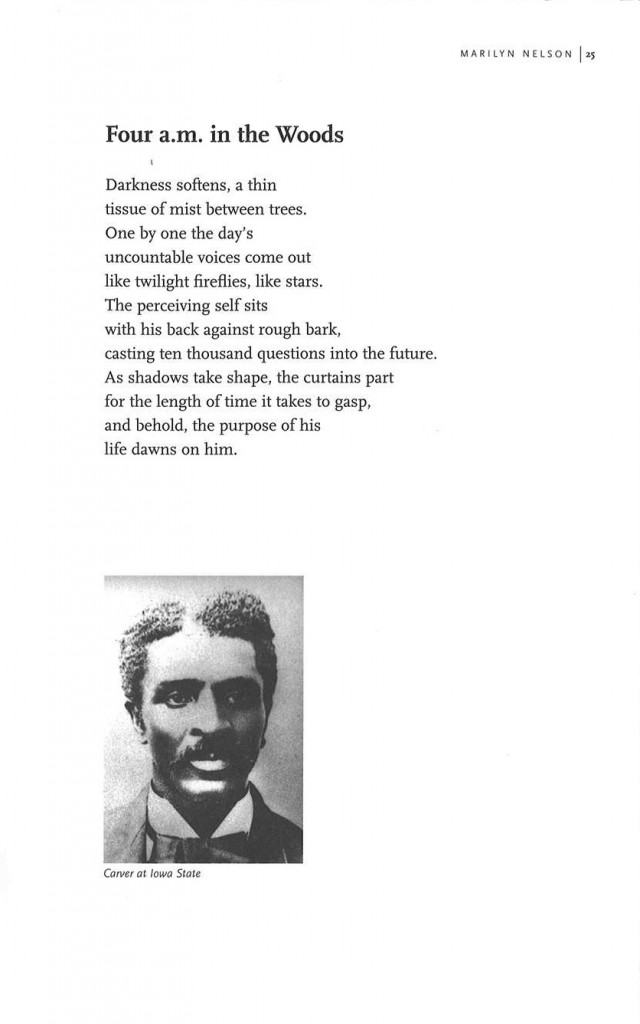
A FEW OTHER EVENTS FOR
AUGUST 6:
- Happy birthday Maxine Kumin (What Color is Ceasar? , The Microscope), Peter Spier (People, The Fox Went out on a Chilly Night), Cynthia Rylant (The Relatives Came, When I Was Young in the Mountains), Geraldine McCaughrean (The White Darkness, Peter Pan in Scarlet).
- It’s the birth date of Will James (1892-1942), Smoky, The Cowhorse, Verna Aardema (1911-2000), Why Mosquitoes Buzz in People's Ears, and Miriam Schlein (1926-2004), Year of the Panda.
- It’s National Yo-Yo Day. Read Knots in My Yo-Yo String by Jerry Spinelli, Yo-Yo Man by Daniel Pinkwater, illustrated by Jack Davis, and Yo? Yes! By Chris Raschka.
August has been designated National Inventor’s Month. Possibly because my engineer father held many telecommunications patents, as a child I always felt that invention was something exciting and possible. Certainly in the book of the day, Marilyn Nelson’s Carver, George Washington Carver emerges as a figure any child would want to emulate.
Marilyn Nelson has long distinguished herself as a poet for adults. Marilyn met editor Stephen Roxburgh while he was defending a picture book by Margot Zemach, Jake and Honeybunch Go to Heaven, against charges of racism. Later Roxburgh convinced Nelson that she should also attempt to write for a young audience. The resulting book was Carver, which won awards, garnered fabulous critical attention, and convinced Nelson that she had something to say to children and teens.
Carver combines many elements in a slim volume of just over 100 pages. Lyrical poems form the bulk of the book, but they have been illuminated with archival photographs and clear and concise footnotes that provide background for the poems. Nelson moves with ease through the dramatic events of Carver’s life. When Carver was only one week old, he, his mother, and sister were kidnapped. Their owner Moses Carter hired John Bentley to rescue them. Nelson showcases Bentley in the first poem, describing his search for and recovery of a “puny black baby.” She highlights George Washington Carver’s drive to become educated and shows him as a washboard wizard, cleaning clothes in Kansas for a living. Then in 1896 Carver accepts Booker T. Washington’s invitation to head up the Agricultural Department at Tuskegee Institute. He remains there for 47 years, inventing new crops and training generations of blacks to become self-sufficient farmers.
In “How a Dream Dies” Nelson eloquently pays tribute to Carver and Washington’s relationship: “It was 1915, the year / of trenches and poison gas, / when Booker T. Washington / rushed home from New Haven / to die in his own bed. / For the first days after the funeral / Carver sat and rocked, sat / and rocked. For months / he could not teach.” In the final poem, Carver, shortly before his death, listens to the sounds of the Tuskegee airmen practicing on Morton field.
In this amazing combination of literature and information, Marilyn Nelson creates a portrait of a believable human being. The poems can be used together, or just a few at a time, to entice young readers and make them want to read more about George Washington Carver. As a book Carver demonstrates that writers need not talk down to an audience or underestimate the abilities of young readers.
Here’s a page from Carver:
Originally posted August 6, 2012. Updated for .






